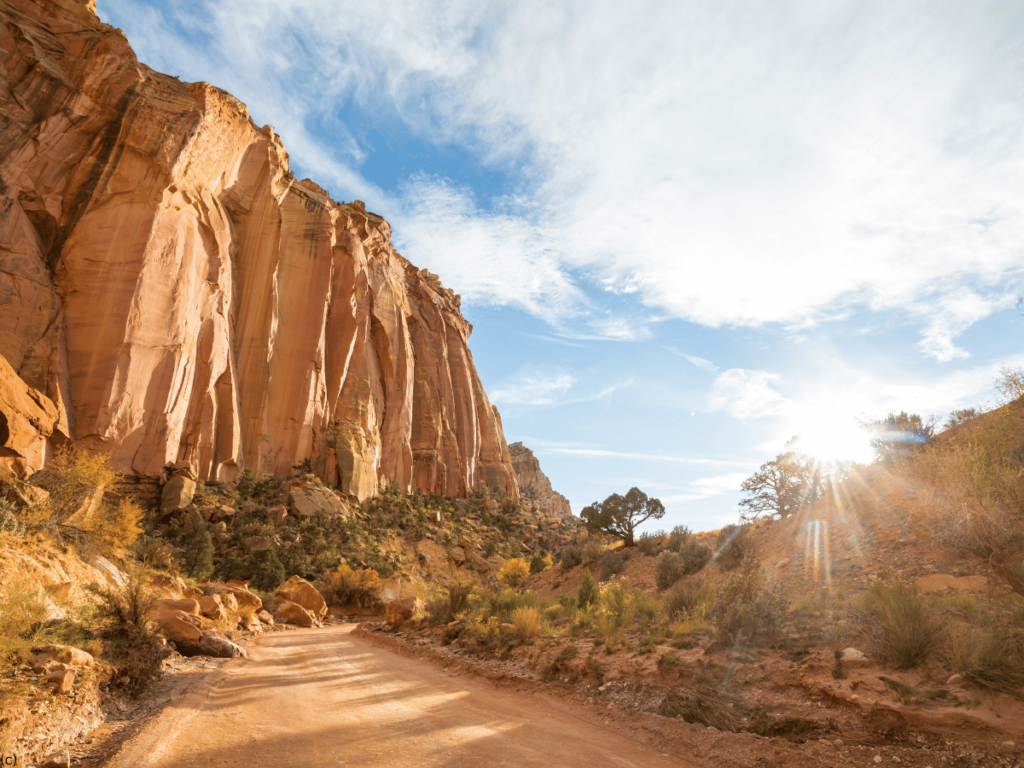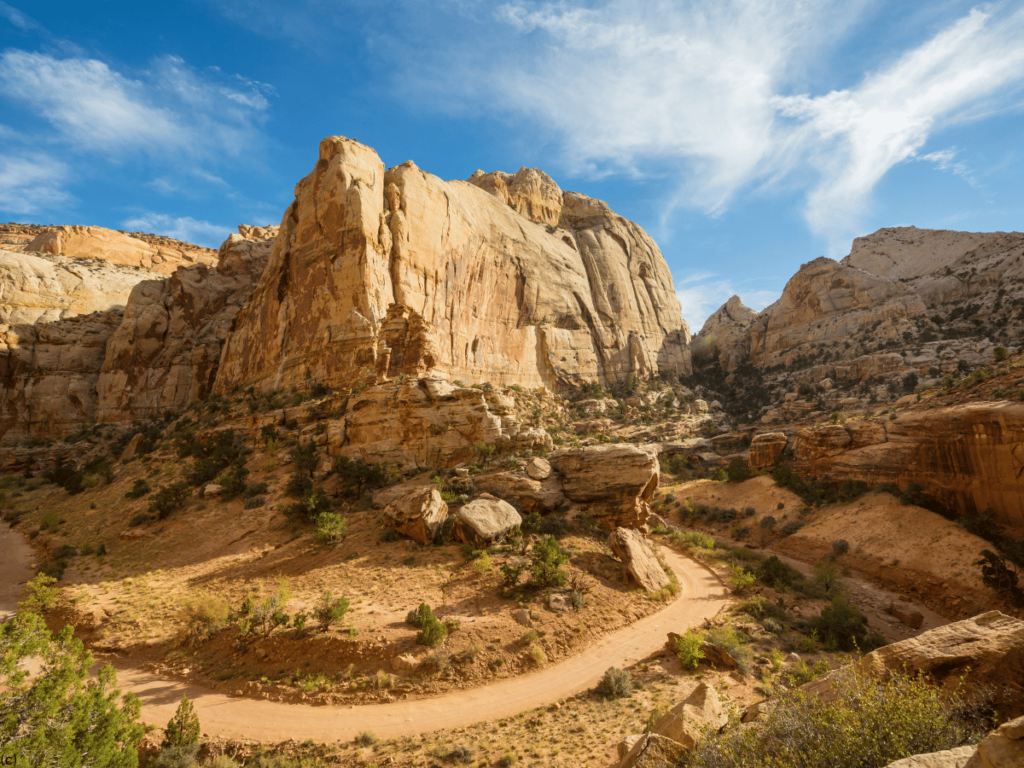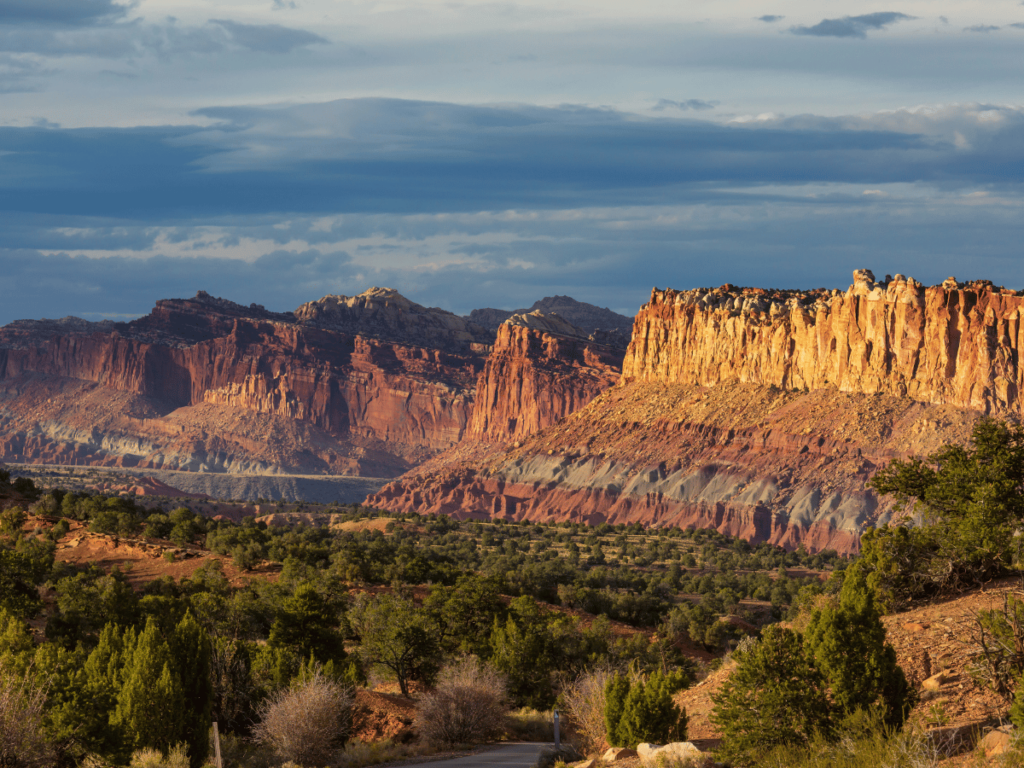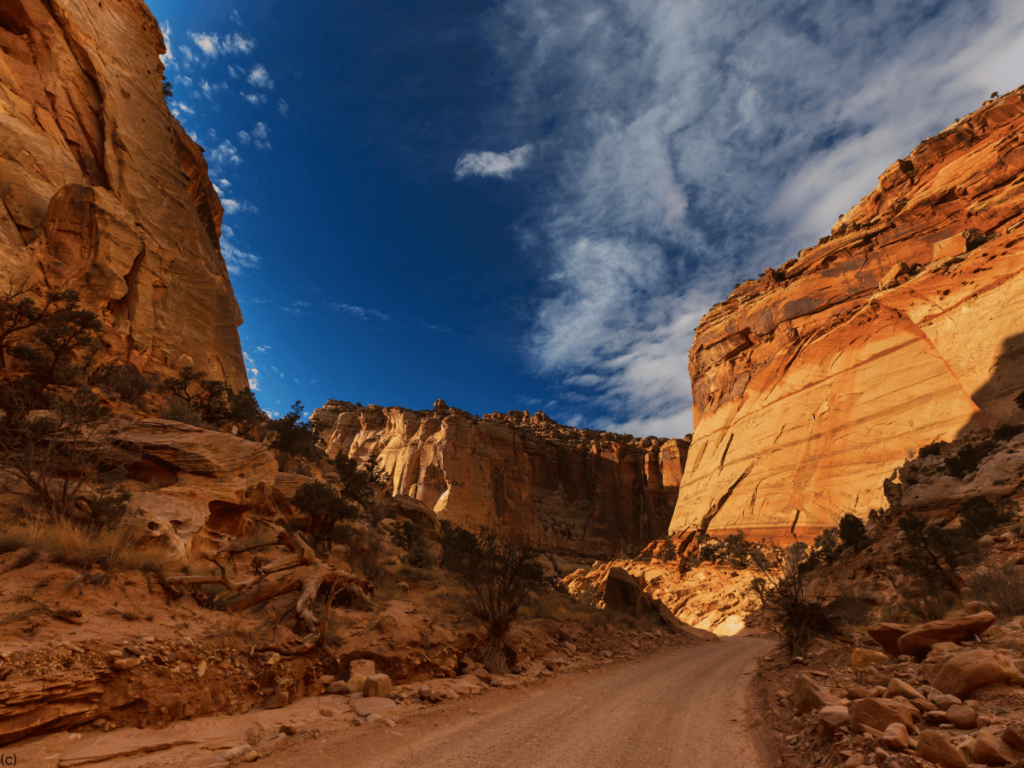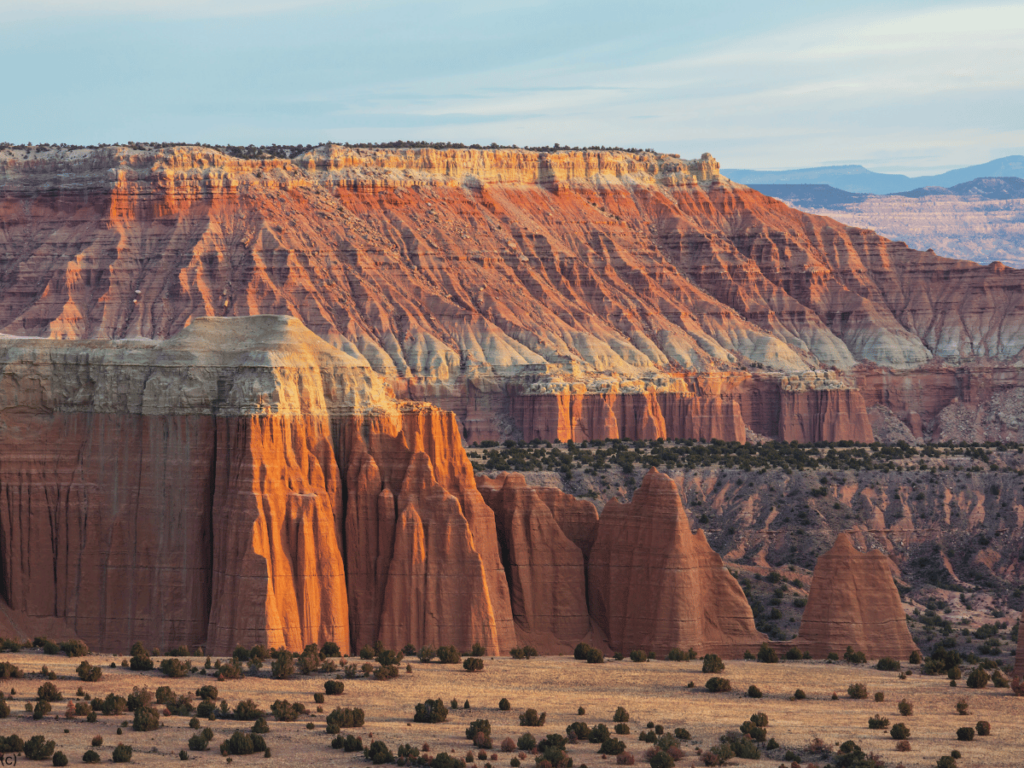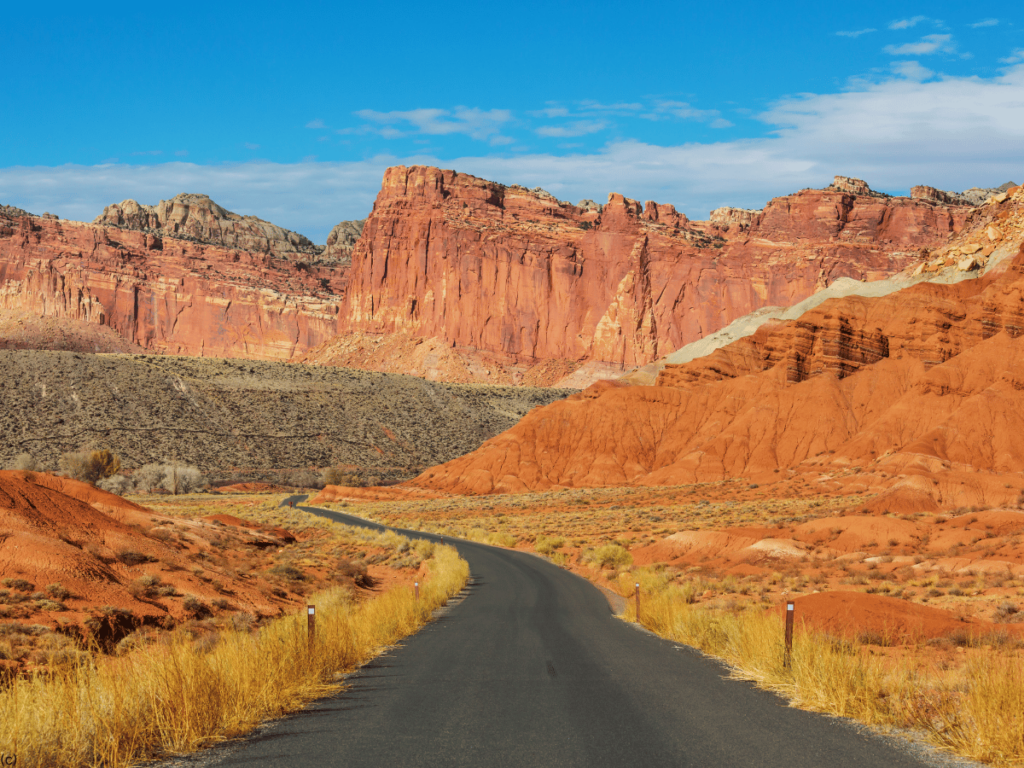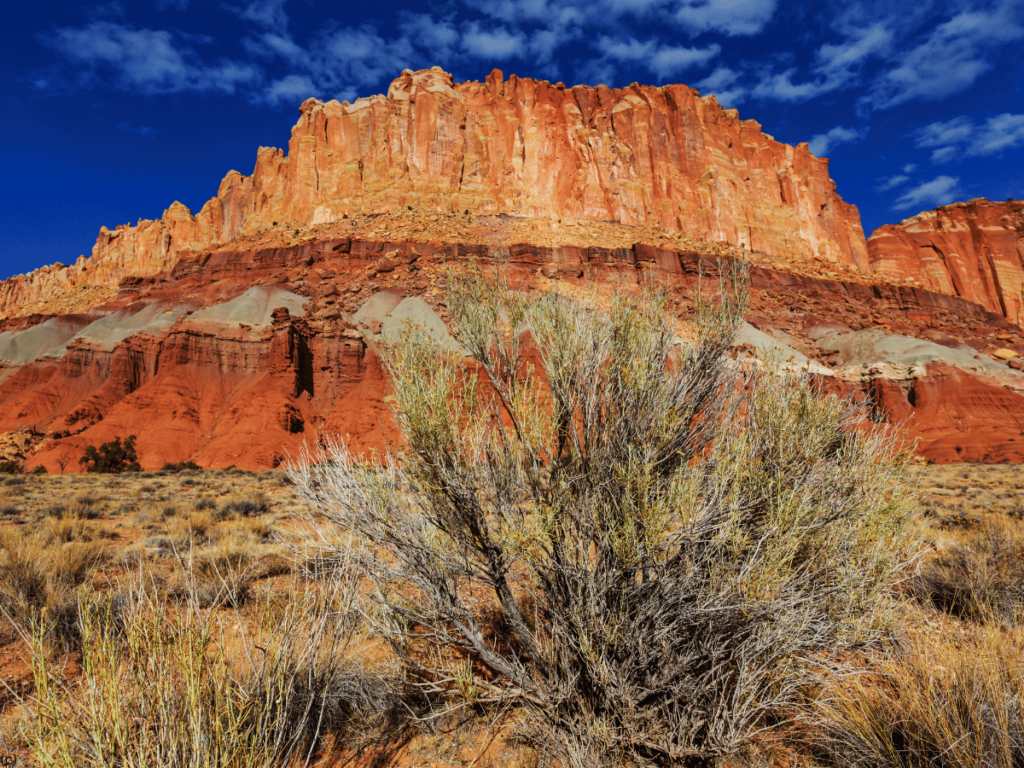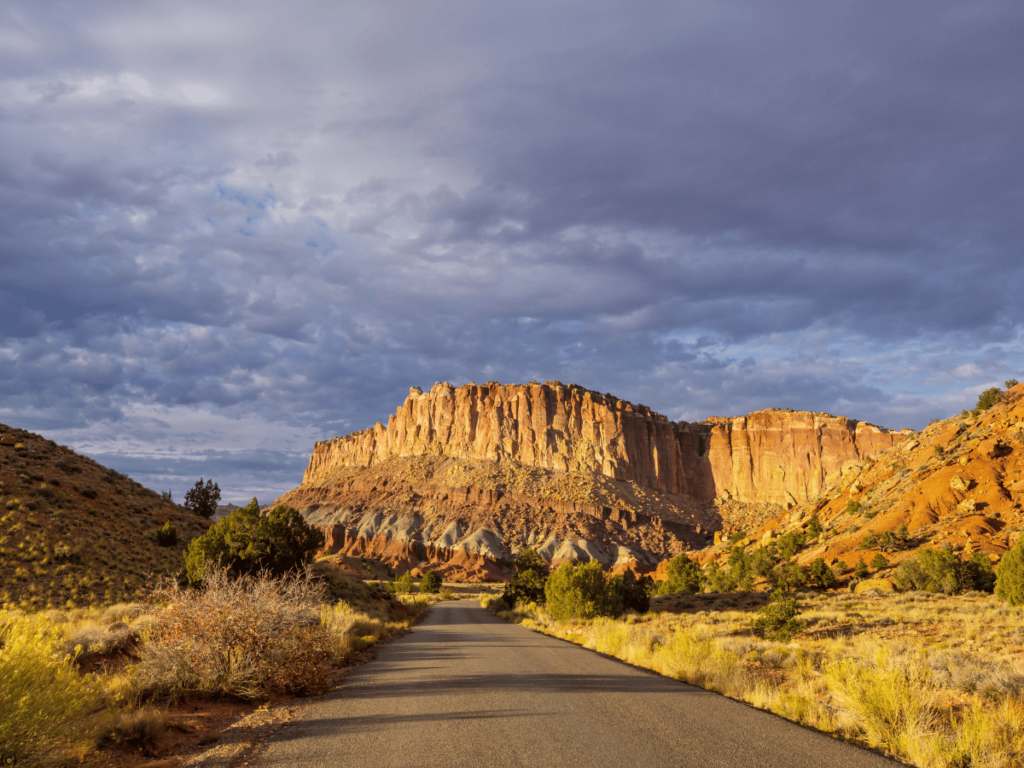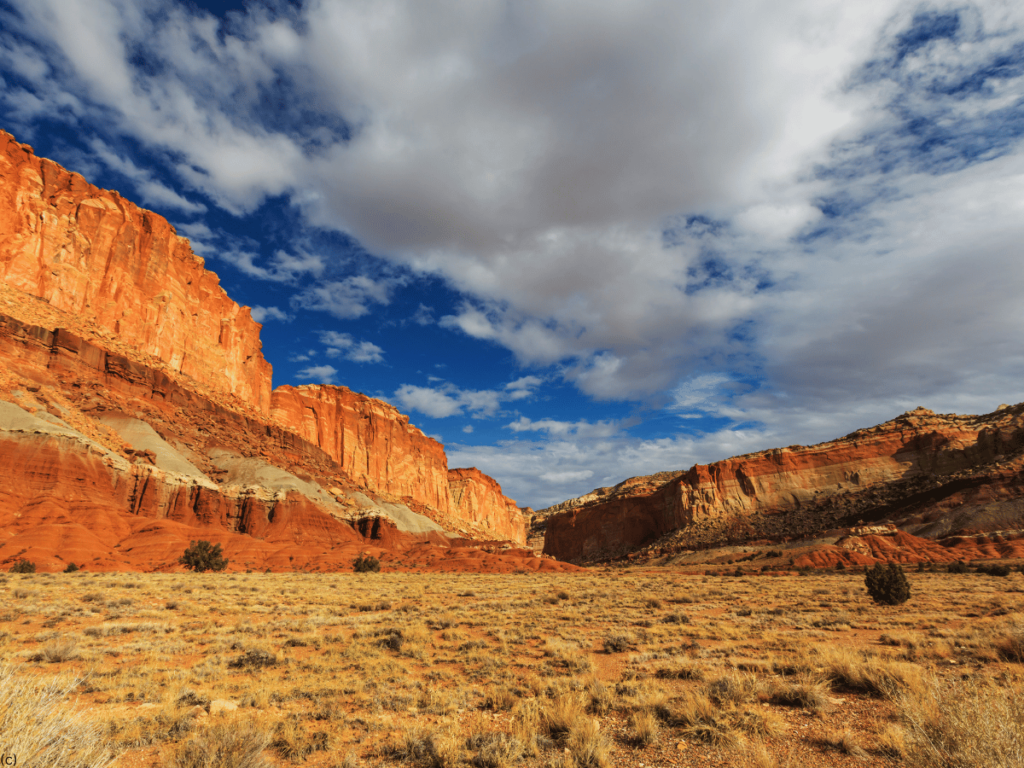
Capitol Reef National Park, located in south-central Utah, is one of the lesser-known gems among the national parks in the United States. While not as famous as Zion or Bryce Canyon, it offers an equally stunning array of natural beauty and outdoor activities that make it a must-visit destination for nature enthusiasts and adventurers alike. Covering nearly 241,000 acres, Capitol Reef is a treasure trove of geological wonders, rich history, and serene landscapes. From rugged cliffs and winding canyons to ancient petroglyphs and picturesque orchards, the park is brimming with things to see and do. Here’s a detailed guide to making the most of your visit to Capitol Reef National Park.
1. Scenic Drives: Capturing the Park’s Beauty
One of the most accessible ways to experience Capitol Reef’s diverse landscapes is by car. The park offers several scenic drives that provide a panoramic view of its geological formations, making it easy for visitors to appreciate the grandeur of the region.
a. The Scenic Drive
The aptly named Scenic Drive is an essential part of any visit to Capitol Reef. This 7.9-mile (one-way) paved road takes you through the heart of the park, offering breathtaking views of the Waterpocket Fold, towering cliffs, and colorful rock formations. Along the way, you can explore several side roads leading to more remote areas of the park, such as the Grand Wash and Capitol Gorge.
- Grand Wash: This side road offers a 2-mile drive that takes you into a narrow canyon with towering walls on either side. You can park at the end of the road and hike deeper into the canyon for a more immersive experience.
- Capitol Gorge: Another side road off the Scenic Drive, Capitol Gorge provides a similar experience to Grand Wash but with the added bonus of the “Pioneer Register,” where early settlers inscribed their names on the canyon walls.
b. Highway 24
Highway 24 runs east to west through Capitol Reef, providing a stunning drive with easy access to some of the park’s most iconic landmarks. Notable stops along the way include:
- Panorama Point: A short detour off Highway 24, Panorama Point offers a sweeping view of the surrounding landscape, especially stunning at sunrise or sunset.
- Goosenecks Overlook: A quick hike from the parking area takes you to this overlook, where you can gaze down at the meandering curves of the Sulphur Creek far below.
- Hickman Bridge: This 2-mile round-trip hike begins just off Highway 24 and leads to one of the park’s most famous natural arches.
2. Hiking: Exploring on Foot
Hiking in Capitol Reef is a fantastic way to immerse yourself in the park’s unique environment. With trails ranging from easy walks to strenuous backcountry routes, there’s something for every level of hiker.
a. Hickman Bridge Trail
The Hickman Bridge Trail is one of the park’s most popular hikes, offering a relatively easy 2-mile round-trip journey to a stunning natural bridge. The trail meanders along the Fremont River, through a scenic canyon, and ends at the base of the 133-foot-long bridge. Along the way, interpretive signs provide information about the area’s geology and history.
b. Cassidy Arch Trail
Named after the infamous outlaw Butch Cassidy, who is said to have used the area as a hideout, the Cassidy Arch Trail is a more challenging hike. This 3.4-mile round-trip trail gains significant elevation as it climbs from the Grand Wash to the top of the arch, offering dramatic views of the surrounding landscape. The trail’s highlight is the chance to stand directly above the arch, a unique experience that’s sure to thrill adventurers.
c. Cohab Canyon Trail
The Cohab Canyon Trail offers a moderate 3.4-mile round-trip hike that begins near the Fruita Campground. The trail quickly ascends into a narrow, colorful canyon that was once a hiding place for early settlers practicing polygamy (hence the name “Cohab,” short for cohabitation). Along the way, you’ll encounter hidden side canyons and stunning vistas of the Fruita Valley below.
d. The Narrows of Capitol Reef
For those seeking a more strenuous adventure, the Narrows of Capitol Reef offer a challenging backcountry experience. This hike is not for the faint of heart, as it involves wading through water and scrambling over rocks in a deep, narrow canyon. The Narrows can be accessed via the Burr Trail Road, and it’s essential to check weather conditions before attempting this hike, as flash floods can occur.
3. Historical Sites: Stepping Back in Time
Capitol Reef is not just a natural wonderland; it’s also rich in human history. The park contains numerous historical sites that offer a glimpse into the lives of those who once called this area home.
a. Fruita Historic District
The Fruita Historic District is the heart of Capitol Reef’s human history. This small, lush valley was once home to a community of Mormon settlers who farmed the fertile land along the Fremont River. Today, the district is preserved as a living history museum, with several historic buildings, orchards, and interpretive exhibits.
- Gifford House: The Gifford House, located in the Fruita Historic District, is a must-visit. This historic farmhouse now serves as a museum and store, offering visitors a chance to step back in time and learn about the early settlers’ way of life. Don’t forget to try the famous homemade pies and jams made from fruits grown in the nearby orchards.
- Fruita Schoolhouse: This one-room schoolhouse, built in 1896, served as the educational center for the children of Fruita. Today, it’s open to the public as a museum, providing insight into the challenges and triumphs of early education in this remote area.
b. Petroglyphs
Capitol Reef is home to some of the most well-preserved petroglyphs in the United States. These ancient carvings, created by the Fremont people over 1,000 years ago, offer a fascinating glimpse into the lives and beliefs of these early inhabitants.
- Petroglyph Panel: Located along Highway 24, the Petroglyph Panel is easily accessible and offers one of the best opportunities to see these ancient carvings up close. A short boardwalk takes you to several viewing areas where you can marvel at the intricate designs depicting animals, people, and abstract symbols.
4. Orchards and Harvesting: A Taste of Fruita
One of the most unique aspects of Capitol Reef National Park is its historic orchards. The Fruita orchards were originally planted by the early settlers and are now maintained by the National Park Service. Visitors are welcome to stroll through the orchards and, in season, even pick fruit to enjoy.
- Orchard Walks: A peaceful walk through the orchards is a delightful way to spend an afternoon. Depending on the season, you may find apple, pear, cherry, apricot, or peach trees laden with fruit.
- U-Pick Harvesting: During harvest season, visitors can pick their own fruit. The park provides baskets, and you can fill them with fresh produce for a nominal fee. This is not only a fun activity but also a way to connect with the agricultural history of the area.
5. Stargazing: Under the Dark Skies
Capitol Reef is designated as an International Dark Sky Park, making it one of the best places in the country to observe the night sky. The park’s remote location and low light pollution allow for unparalleled stargazing opportunities.
- Night Sky Programs: The park offers regular ranger-led night sky programs, where you can learn about the stars, planets, and constellations visible in the clear desert sky. These programs often include the use of telescopes for a closer look at celestial objects.
- Milky Way Viewing: On a clear night, the Milky Way is easily visible with the naked eye. The sight of this brilliant band of stars stretching across the sky is awe-inspiring and not to be missed.
6. Waterpocket Fold: Geological Marvels
The Waterpocket Fold is the defining geological feature of Capitol Reef, a nearly 100-mile-long wrinkle in the Earth’s crust that has created a landscape of stunning cliffs, canyons, and domes.
a. Strike Valley Overlook
For an expansive view of the Waterpocket Fold, head to the Strike Valley Overlook. This viewpoint, accessible via the Burr Trail, offers a panoramic view of the fold and the surrounding landscape. The overlook is a great spot for photography, especially during the golden hours of sunrise and sunset.
b. Burr Trail Road
The Burr Trail Road is a scenic backcountry route that cuts through the heart of the Waterpocket Fold. The road winds through dramatic landscapes, including narrow canyons and towering cliffs, and offers numerous opportunities for hiking and photography. While the first part of the road is paved, the section that descends into the fold is unpaved and can be rough, so a high-clearance vehicle is recommended.
7. Cathedral Valley: Remote and Rugged Beauty
Cathedral Valley, located in the northern part of Capitol Reef, is one of the park’s most remote and rugged areas. This backcountry region is famous for its towering monoliths, including the Temples of the Sun and Moon, which rise dramatically from the desert floor.
a. Cathedral Valley Loop
The Cathedral Valley Loop is a 58-mile, unpaved road that takes you through the heart of this remote area. The loop can be driven in a high-clearance vehicle and is best done in a clockwise direction. Along the way, you’ll encounter stunning rock formations, colorful badlands, and expansive desert vistas.
- Temples of the Sun and Moon: These iconic monoliths are the highlight of the Cathedral Valley Loop. Standing side by side, the Temples of the Sun and Moon are two massive sandstone formations that seem to glow in the light of the rising or setting sun.
b. Glass Mountain
Another fascinating feature of Cathedral Valley is Glass Mountain, a small hill composed entirely of selenite crystals. This unique geological formation is a must-see for rock enthusiasts and offers a glittering contrast to the surrounding red rock landscape.
8. Camping: Sleeping Under the Stars
For those who wish to fully immerse themselves in the natural beauty of Capitol Reef, camping is an excellent option. The park offers several campgrounds, each providing a different experience.
a. Fruita Campground
The Fruita Campground is the park’s main camping area and is located in the heart of the Fruita Historic District. This developed campground offers 71 sites, including tent and RV spots, with amenities such as flush toilets, drinking water, and picnic tables. The campground is shaded by large cottonwood trees and is conveniently located near many of the park’s main attractions.
b. Backcountry Camping
For a more remote experience, backcountry camping is allowed in most areas of the park, though a free backcountry permit is required. Backcountry camping offers solitude and the chance to explore less-visited parts of Capitol Reef, but it also requires careful planning and preparation, as there are no amenities in the backcountry.
9. Ranger Programs: Learning and Exploring
Capitol Reef offers a variety of ranger-led programs designed to educate and engage visitors. These programs are a great way to learn more about the park’s natural and cultural history.
- Guided Hikes: Join a ranger for a guided hike along one of the park’s trails. These hikes often focus on specific topics, such as geology, wildlife, or history, and provide an opportunity to gain a deeper understanding of the park.
- Junior Ranger Program: For families with children, the Junior Ranger Program is a fun way for kids to learn about Capitol Reef. By completing a series of activities, kids can earn a Junior Ranger badge and certificate.
- Evening Programs: During the summer months, the park offers evening programs at the Fruita Campground amphitheater. These presentations cover a range of topics, from the night sky to the history of the Fremont people, and are a relaxing way to end a day of exploration.
10. Photography: Capturing the Park’s Splendor
Capitol Reef’s diverse landscapes and unique lighting conditions make it a paradise for photographers. Whether you’re an amateur with a smartphone or a professional with a full kit, you’ll find countless opportunities to capture stunning images.
- Sunrise and Sunset: The golden hours of sunrise and sunset are the best times for photography in Capitol Reef. The low angle of the sun casts warm light on the red rocks, enhancing the colors and creating dramatic shadows.
- Night Photography: With its dark skies, Capitol Reef is also an excellent location for night photography. Capture the Milky Way, star trails, or the moonlit landscape for breathtaking images.
- Wildlife Photography: While Capitol Reef is not as well-known for wildlife as some other parks, it still offers opportunities to photograph animals such as mule deer, bighorn sheep, and a variety of birds.
Capitol Reef National Park is a destination that rewards exploration and offers a wide range of activities for visitors of all interests and skill levels. Whether you’re driving through on a scenic road trip, hiking deep into a canyon, or simply relaxing in the shade of a fruit tree in Fruita, Capitol Reef provides an unforgettable experience. With its stunning landscapes, rich history, and peaceful atmosphere, this hidden gem in Utah’s red rock country is well worth the visit. Whether you’re an adventurer, a history buff, or someone seeking tranquility, Capitol Reef has something to offer, making it a perfect addition to any travel itinerary.

